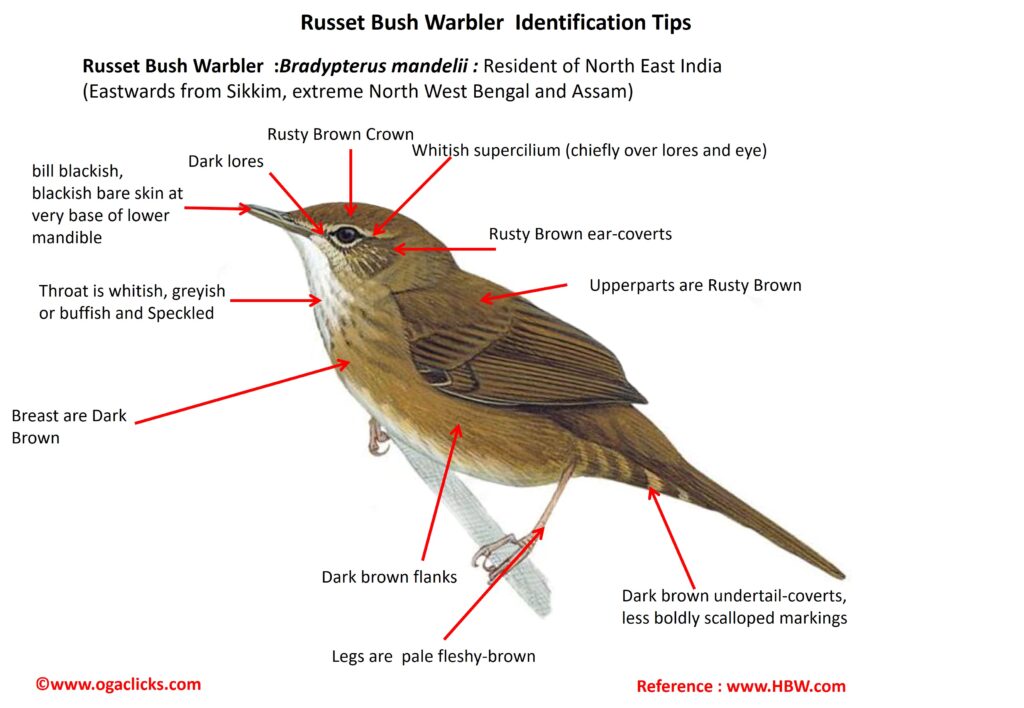
Russet Bush Warbler (RUSSET GRASSHOPPER-WARBLER) Locustella mandellii
Etymology:
- Locustella : Latin word for ‘”Grasshoper” derived from locusta– grasshopper
- Mandellii : Named after ornithologist Louis H. Mandelli (1833–1881)
Distribution: Resident of North East India (Eastwards from Sikkim, extreme North West Bengal and Assam)
Details: Size of 13–14 cm; wt. of 10 g. It is a medium-sized chestnut-brown bush-warbler, variable in colour intensity, appearing very dark at wings and rear end). The nominate race has rusty brown or chestnut-brown on crown, ear-coverts, nape and upperparts, including wings and tail. It has a whitish supercilium contrasting with dark lores. The throat is whitish, greyish, or buffish, throat sides are often speckled. The breast, flanks and undertail-coverts are dark brown, sometimes very grey across breast. It has undertail-coverts with paler fringes. The iris is brown; bill is blackish, blackish bare skin at very base of lower mandible. The legs are pale fleshy-brown. Both the sexes are similar. The juvenile can be very dark brown, virtually plain dark-headed, central belly can be lighter buffy yellowish, tail often shorter than that of adult and with rectrices pointed, base of lower mandible flesh-coloured.
Habitat: It is found in shrubby thickets, bamboos and tangles of tall grasses, bramble, and willows, even close to villages. In breeding it is found in include sparsely wooded slopes with forest clearings, also margins of terraced cultivation, including tea plantations. In non-breeding season found in terai grassland and scrubby cultivation at edges of plains, at lower elevations.
Food habits: It eats Insects. It is secretive and very skulking.
Breeding habits: They breed in May in India. They lay a clutch 3 or 4 eggs.